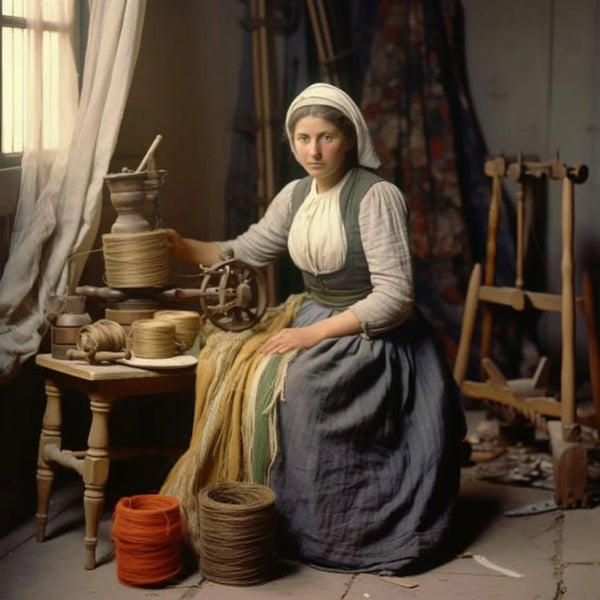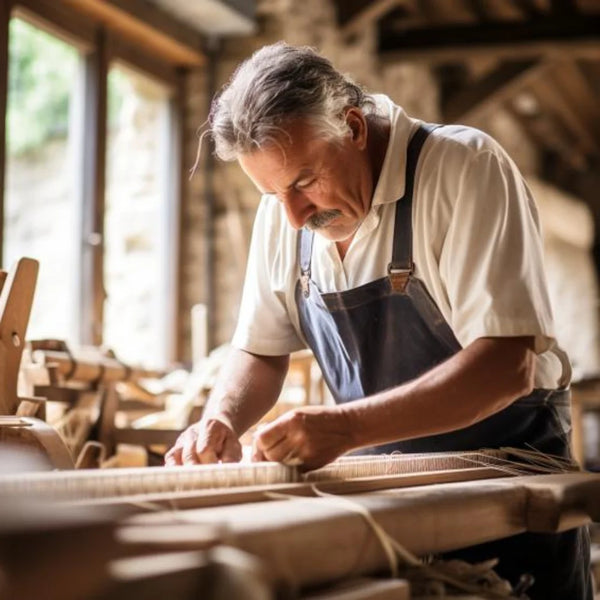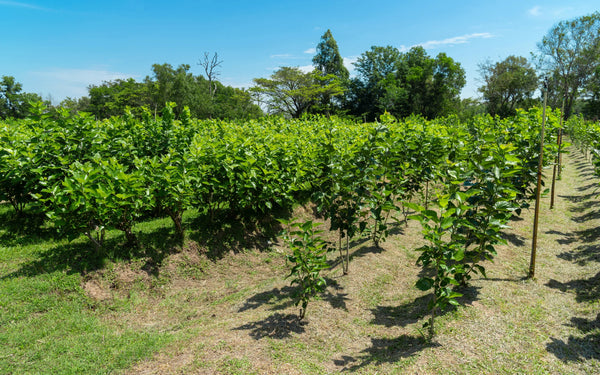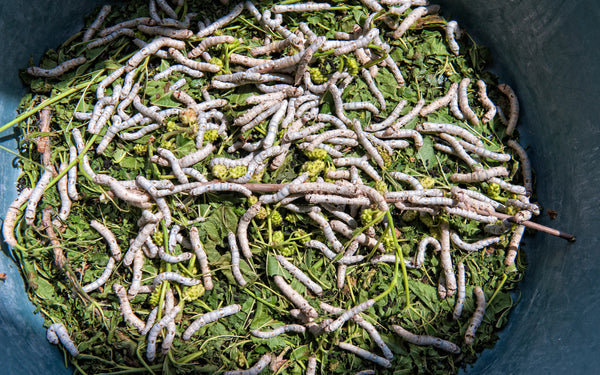Key Takeaways
The silk production in France is today very confidential but still exists in a few rare traditional areas. The main producing regions are the South-East with the Cévennes, Languedoc-Roussillon, the Rhône valley, Provence and the South-West with Lauragais and Midi-Pyrénées. There are a few small silkworm farms and artisanal workshops which perpetuate this ancestral know-how. If the volumes remain marginal, these initiatives promote the great quality and the exceptional tradition of French silk.
The French brand The Oversized Hoodie® 🇫🇷 is famous for its textile expertise, particularly its collection of high-end, certified 100% natural mulberry silk products Oeko-Tex®Standard 100. Free from toxic and chemical substances, and ecological, the collections silk pillowcase, silk night mask and silk sheets stand out for their incomparable softness and excellent value for money, providing an unrivaled feeling of comfort.
When did silk production begin in France ?
The silk production in France has its origins in the Middle Ages, when this precious silk fabric was imported from China via the legendary Silk Road. From the 13th century, King Louis IX planted mulberry trees and brought in Italian artisans to develop sericulture in the Kingdom of France.
But it was truly in the 19th century that France became one of the world leaders in silk production, thanks to the development of silk spinning in the Cévennes. French silk then achieved an international reputation.

Also read: How is silk made ?
The history of silk production in France
The rise of sericulture in the Cévennes in the 19th century
Attracted by the fortunes made in silk production, many Cévennes peasants embarked on mulberry cultivation and silkworm breeding at the beginning of the 19th century. Thousands of mulberry plantations are created to feed the precious worms.
In 1856, French silk production reached its peak with nearly 40,000 tons of cocoons harvested, making France the world's leading producer ahead of China and Italy. Lyon silks acquire international fame.
The decline in French production following epidemics
But this success was short-lived. From 1865, diseases such as pebrine and flacherie decimated the silkworms, causing the collapse of French sericulture. Despite the intervention of Louis Pasteur, production fell to only 2000 tonnes of cocoons in 1875.
Successive epidemics dealt the final blow to the French silk spinning mill. Unable to compete with cheaper silk from Asia, most silk factories closed in the first half of the 20th century.
The renaissance of silk production in France in the 21st century
The decline seemed irreversible until the 1990s, when passionate artisans and breeders decided to revive this ancestral know-how.silk workshops are reopening and once again offering woven silk 100% French.
This craze for wild silks allowed a timid renaissance of sericulture. Even if production remains marginal, it highlights the exceptional heritage of French silk.
As the founder of The Oversized Hoodie®, I am fascinated by the history of silk in France. The know-how of French artisans in transforming silk is truly unique. I hope to share this passion with you through this article!
— Geoffrey, Founder of The Oversized Hoodie®

Also read: Which animal produces silk ?
The main silk producing countries today
Today, China alone accounts for 80% of world silk production. Next come India (14%) and Uzbekistan (4%). France's share is tiny, with barely 100 tonnes per year. Japan and Brazil are also among the silk producing countries.
Current silk production in France
French regions where silk is produced
A few rare production basins perpetuate the French sericultural tradition: the Tarare region in the Rhône, Lauragais, the Cévennes, the Ardèche, the Drôme, and to a lesser extent, Alsace . It is estimated that around a hundred small silkworm breeders are still active.
They supply the raw material, raw silk, to weavers established in the same production areas. The number of weaving workshops does not exceed twenty throughout the territory.
The challenges of silk production in France
These passionate artisans face many challenges. First of all, the cost of labor in France does not allow production on a large scale. Additionally, silkworm diseases still pose a risk.
Finally, foreign competition with Asia, where silk is 4 to 5 times cheaper, is difficult to overcome. Only a small high-end niche makes French production profitable.
Initiatives to revive silk production in France
Aware of these difficulties, programs aim to develop the silk sector in France. The Silk Technical Institute is working on creating new races of worms that are more resistant to disease.
The Soierie Vivante association trains new silk farmers, forms partnerships with creators, and sets up a Soie de France label to better promote this exceptional production.

Also read: Which country invented silk ?
French silk: an exceptional material
The unique quality of French silk
Despite low production volumes, French silk enjoys a reputation for international excellence. Its qualities are due to its 100% French origin and its weaving using traditional methods.
The worms are raised in the open air and fed with mulberry leaves harvested by hand every morning. This gives virgin cocoons of incomparable finesse. The reeling and the weaving by hand provide unique finishes.
The uses of silk in the luxury industry
These exceptional characteristics make it a noble material sought after by the greatest fashion houses. French silk is found in haute lingerie, ties and luxury accessories.
It is essential for wedding dresses, tailor-made suits, and certain vintage pieces. Its infinite variations of touches, colors and patterns make it a precious textile.

Also read: How the worm weaves silk ?
The future of silk production in France
Although confidential, the future of the silk industry seems promising in France. The demand for artisanal and natural products is growing. Young designers are rediscovering the infinite possibilities of this noble fabric.
Innovation also serves this centuries-old tradition, to create high-tech silks, such as thermal or antibacterial silk.
By focusing on quality and creativity, French silk has a bright future ahead of it and will contribute to the influence of French textile heritage.
At The Oversized Hoodie®, we are proud to work with partners who keep the heritage of silk alive. Their passion for this noble textile and their mastery of traditional techniques deserve to be celebrated.
— Geoffrey, Founder of The Oversized Hoodie®

Also read: Where the silkworm lives ?
Conclusion
Silk has had contrasting destinies in France. Long a world leader thanks to the know-how of the Cévennes, production collapsed in the 20th century. Today, enthusiasts are trying to revive this centuries-old tradition.
Even confidential, this production highlights the excellence of French silks and their unique quality. By focusing on innovation and creativity, the silk industry can reconnect with the prestige of its legendary silks and fabrics.
The creators and artisans are bringing this noble textile back to life by using it for precious pieces: fine lingerie, silk stockings, scarves and luxury dresses. Silk fully contributes to the elegance of French haute couture.
Certifications such as the Soie de France label promote this exceptional fabric and its 100% French origin. traceability is increasingly sought after by consumers concerned about ethics and ecology.
By connecting this ancestral know-how to innovations and contemporary trends, French silk has a bright future ahead of it and will contribute to influence of French textile culture.
| Appearance | Description |
|---|---|
| Historical origins | Importation in the Middle Ages from China. Development under Louis IX in the 13th century. |
| Apogee of production | 19th century, Cévennes. France, the world's leading producer before the epidemics. |
| Decline in production | Collapse in the 20th century due to disease and Asian competition. |
| Renaissance in the 21st century | Passionate artisans and breeders, marginal production but high quality. |
| Main challenges | Labor costs, silkworm diseases, foreign competition. |
| Current initiatives | Development programs, training, “Soie de France” label. |
| Quality of French silk | Reputation for excellence, free-range breeding, traditional weaving. |
| Use in luxury | Haute couture, lingerie, ties, luxury accessories. |
| Future of production | Demand for artisanal products, innovation, growth potential. |
FAQ
Where silk is made ?
The majority of silk is produced in Asia, China, India and Uzbekistan. In France, there remain a few rare production areas such as the Cévennes, Lauragais or Ardèche.
Which countries produce silk ?
The main producing countries are China, India, Brazil, Uzbekistan, Japan, and to a lesser extent France. Historically, China and France have dominated this production.
Who produces silk ?
Silk is produced by sericulturists, who raise the silkworm, and weavers who transform the thread into silk fabric. In France there are still around a hundred small breeders producing the raw material.
Where does silk come from ?
Originally, silk came from China from where it was exported to Europe via the Silk Road. Today, China and Asia remain the world's leading producers. France represents only a tiny part of production, despite its sericultural history.
How silk is made ?
Silk is produced by the silkworm, which builds its cocoon with the silk thread. This cocoon is harvested then the threads are extracted by reeling and woven to obtain the silk fabric. A complex and fragile process.
What is the name of a silkworm breeder ?
The silkworm breeder is called a silkworm farmer. The sericulturist takes care of breeding the worms, planting mulberry trees to feed them, and harvesting the cocoons.
How does the silkworm produce its thread ?
The silkworm produces fibroin, a protein secreted by its glands. By combining it with sericin, it forms the silk thread it uses to weave its cocoon. An incredibly durable and elegant thread.
What is the ideal temperature for breeding silkworms ?
The breeding of silkworms requires a constant and mild temperature, between 20°C and 28°C depending on the stages of development. A variation of a few degrees can disrupt the worm cycle.
What are the enemies of the silkworm ?
Silkworms are vulnerable to diseases (pebrine, flacherie, etc.), variations in temperature and humidity, as well as certain predators such as ants or spiders. Louis Pasteur studied these diseases which decimated livestock farming in France.
Where the mulberry trees grow to feed the silkworms ?
Mulberry trees for silkworm breeding were traditionally cultivated in the South of France, particularly in the Cévennes, where thousands of hectares were devoted to them.







